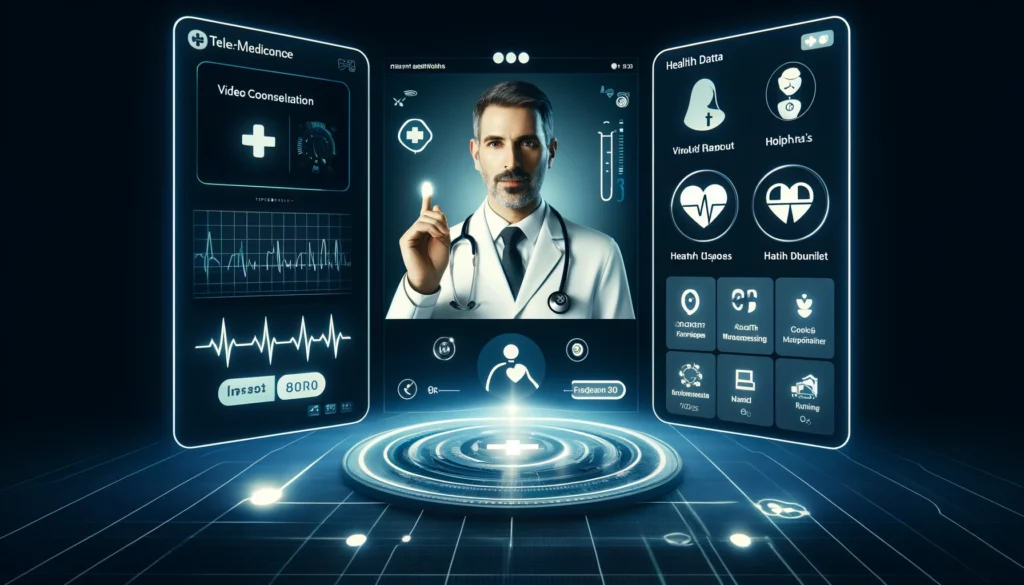For years, remote healthcare, also known as telehealth or telemedicine, was considered “around the corner” or “coming soon”. But when COVID-19 hit, it surged to the forefront of the medical industry. Propelled by technological advancements and changing societal needs, telemedicine has brought a revolution and reshaped patient-provider interactions. But it’s also brought a new set of risks.

The Technologies Shaping Remote Healthcare
Before the advent of modern telehealth technologies, remote healthcare was primarily limited to telephone consultations and mail-in health assessments. This rudimentary form of telemedicine lacked of real-time data, visual assessments, and immediate feedback restricted the potential of remote healthcare, making it a supplementary rather than a primary mode of healthcare delivery. There was very little data to work with.
That’s changed a lot.
The explosion of telemedicine platforms facilitates video consultations, real-time health monitoring, and instant messaging between patients and healthcare providers. Video calls have become a simple reality nowadays and that’s just the start of it. Technologies like address autocomplete APIs allow patients to find nearby health facilities when they need in-person assistance. This tech also helps with the accurate delivery of essential meds and assistive devices. Wearable devices that monitor vital signs, physical activity, and even sleep patterns are starting to play a more and more important role in remote healthcare. These devices provide continuous health data, enabling proactive healthcare management and personalized treatment plans. This segment will discuss the impact of wearables on patient engagement and health outcomes.
Take some examples just from the UK.
Thousands of people living with Chronic Obstructive Pulmonary Disease (COPD) are managing their condition from the comfort of their own home thanks to support from a nurse-led digital service. Meanwhile, in London, a shared digital vision between clinical and non-clinical professionals has helped transform the pre and post operative experience for hundreds of patients.
Then, of course, there’s AI.
Artificial Intelligence and Big Data
AI and big data analytics are at the forefront of transforming remote healthcare through predictive modeling, diagnostic accuracy, and personalized medicine. AI is fostering a “data-first” approach that enables personalized medicine approach by analyzing vast datasets to identify patterns and predict individual health outcomes, thus tailoring treatment plans to the unique genetic makeup and lifestyle of each patient.
By analyzing vast amounts of health data, these technologies can predict health trends, optimize treatment plans, and even identify potential health crises before they occur. For instance, a machine learning algorithm prevented hundreds of cases of sepsis by detecting patterns linked to sepsis and flagging them accordingly.
Think of it this way: we have a lot of data nowadays — but analyzing and drawing conclusions is still not easy. AI can augment the work of medical workers (not replace them) and find patterns that can lead to a better and faster diagnosis. This being said, however, AI is not a panacea.
Furthermore, despite its benefits, the integration of technology into remote healthcare is not without challenges.
No free lunch
Data privacy, security concerns, and the digital divide represent significant hurdles that we need to overcome. Also, technology makes it easier to make mistakes. For instance, drug autocomplete systems were highlighted as a major risk of technology in healthcare, especially considering that 93% of all current FDA-approved medications share the first three letters of their name with at least one other drug.
This risk is perhaps the greatest when it comes to AI.
“We’re all stepping into a new era of responsible AI use in public health and clinical medicine,” Alain Labrique, WHO director of digital health and innovation, told a press briefing on 18 January.
“The principles and recommendations within this document pave the way for a future where AI contributes to the well-being of humanity, adhering to the highest ethical standards,” Labrique told Sci Dev.
Overestimating the capabilities of such models, without considering their pitfalls, can lead to misdiagnoses or wrong decisions. Overdependence on AIs can also lead to inefficiencies in healthcare — basically, if AIs aren’t used properly, they can do the opposite of what they’re supposed to.
“There is no free lunch,” Rohit Malpani, of the WHO’s research for health department, said during a briefing. “There are different risks associated with each use case.”
“There are also broader health systems and societal risks.”
Balancing risk and opportunity
It’s almost certain that technology in healthcare will cause some damage. This is always the case with technology in any field. The key is to minimize this damage to the absolute minimum while maximizing the benefits as much as possible. Essentially, you want as much of the good as possible and as little of the bad as possible.
But if there’s something that the history of healthcare has taught us it’s that companies and the free market, by themselves, can’t get the job done. We need oversight and regulation to ensure that these technologies are used for the benefit of people, not for the profit of companies.
For now, there’s little (if any) oversight and technology is progressing fast, leaving a regulatory gap that needs to be addressed to ensure that the adoption of these innovations genuinely serves public health interests and upholds ethical standards.
Technology-driven remote healthcare is breaking down geographical barriers, and making healthcare services accessible to remote and underserved populations. We need to ensure that it works for the many and doesn’t leave people behind.






